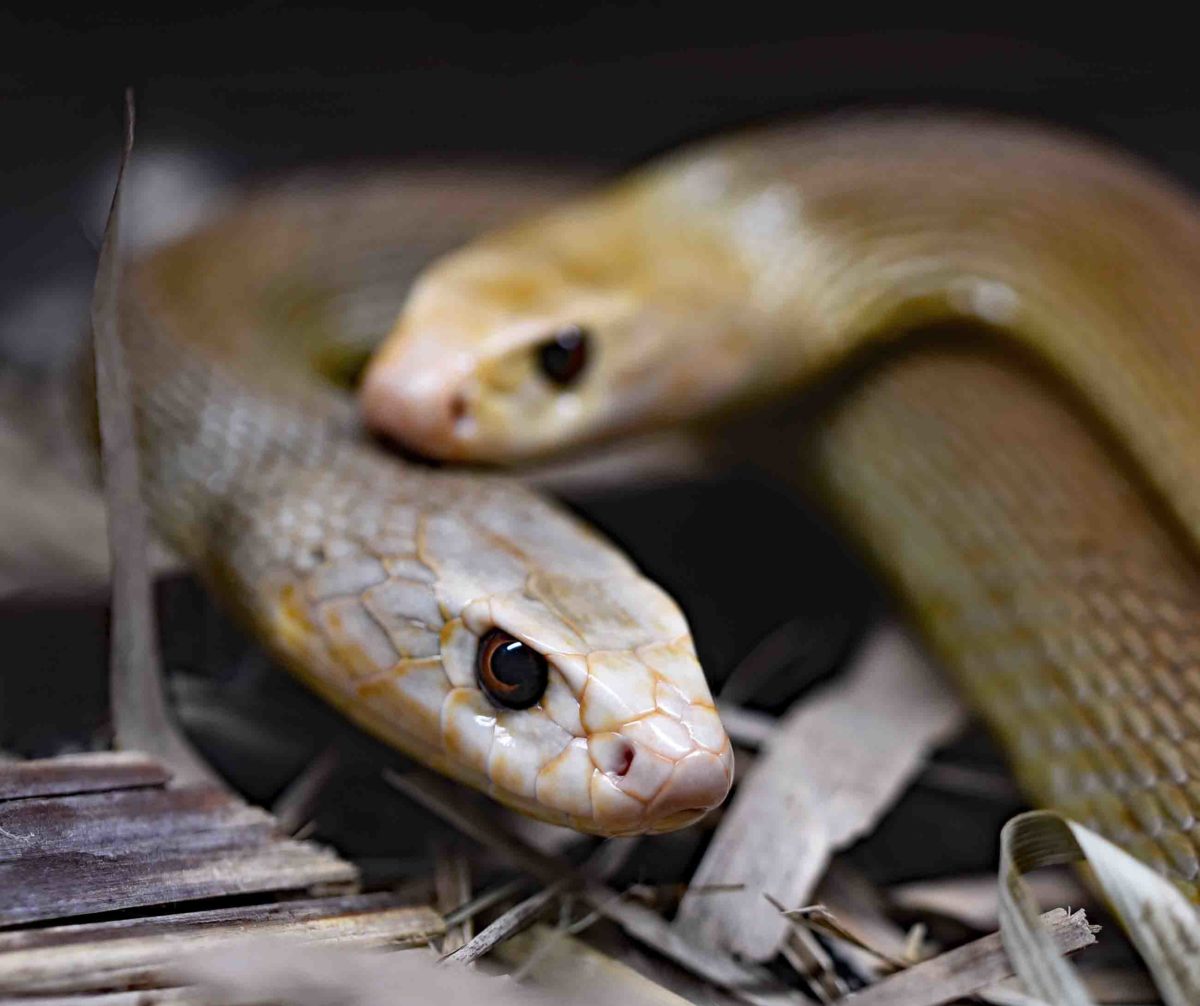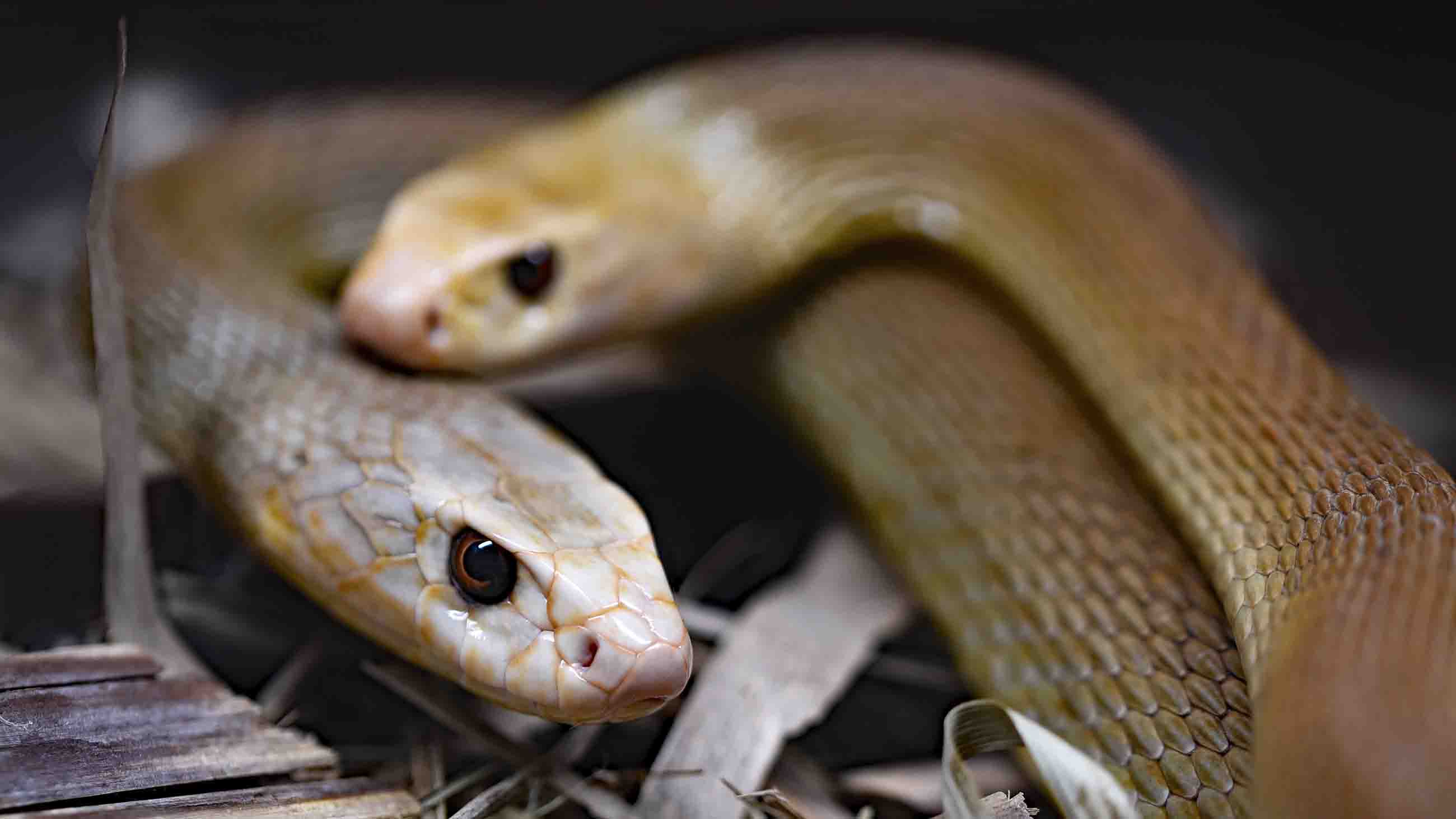Against Fungal Infections, Snakes May Have an Edge
Deadly fungal infections are indisputable threats to bats in North America and to frogs, toads, and salamanders globally. Over the past three decades, such diseases have contributed to the extinction of numerous amphibian species — and for now, scientists have uncovered no clear way to halt the losses.

Bats and amphibians are succumbing to fungal infections at an alarming rate. But snakes may have an advantage.
Visual: David Clode/Unsplash
One glimmer of hope, however, might be found in some 30 species of snakes, which have also been struggling with fungal disease in recent years. Compared with amphibians and bats, it appears that certain snakes, if not virtually all of them, could have a decent shot at surviving their fungal affliction — particularly if scientists and wildlife managers get ahead of the pathogen in ways that they haven’t with bats and amphibians.
In the past decade or so, scientists have found the fungus Ophidiomyces ophiodiicola on wild snakes primarily in the northeastern United States. Cases also have been reported in wild snakes in Europe, and in captive snakes in Australia, Germany, and the U.K. “We know that snake fungal disease negatively impacts individuals and causes mortality in some cases,” says Eric Hileman, a population ecologist and herpetologist with the U.S. Geological Survey in Guam. The fungus can lead to lesions and irregular scaly buildups that remain even after skin is shed.
The incidence of the fungus among wild eastern massasauga rattlesnakes at three sites in Michigan ranged from 3 percent to 17 percent, according to a study by Hileman and colleagues that was published this month in the Journal of Wildlife Management. Another estimate put the extent of lesions on snakes coming out of hibernation at sites in Florida at about 40 percent, and the majority of those lesions were caused by Ophidiomyces fungus.
Wildlife managers and biologists are concerned that fungal disease in snakes, if left unstudied and unchecked, could wipe out large populations as fungal infections have done to bats and to amphibians. Insights into the fungal disease in bats, called white nose syndrome, often do not pertain to similar diseases in snakes, amphibians, and other affected species. Different fungal species are involved, and it is unclear whether they evolved in the same region as the animals, or instead were introduced from somewhere else. That distinction can result in differences in susceptibility and immunity to problematic fungi.
But those responses might be just what makes it easier for wildlife managers to help snakes overcome disease caused by Ophidiomyces infections, says Jeffrey Lorch, a microbiologist at the U.S. Geological Survey in Madison, Wisconsin. It’s possible that many snake species developed an immunity to the fungus because they co-evolved with it, unlike in, say, the case of bats, where the pathogen was introduced. And while some snakes are carriers of the fungus and apparently suffer no ill effects from it, scientists now suspect that many individuals might be losing their native immunity due to external stressors — typically habitat loss, climate change, and other human-driven influences.
“Snakes might have mechanisms that they would normally use to cope with that pathogen,” Lorch says, “but something is off, be it a changing habitat or changing climate, that they are just not able to deal with it as they normally would.”
If those external conditions can be addressed, researchers theorize, some measure of native immunity might be preserved. Interventions to help snakes regain that advantage against Ophidiomyces infections could include thinning forests so snakes are exposed to more sunlight. Some research shows that infected snakes are more likely to bask in the sun, which could help them better fight off infection — although other research shows the opposite relationship between infections and basking. Clearly, more research needs to be done.
Meanwhile, the prognosis for bats did get a little brighter this month. In lab experiments, a pulse of ultraviolet light was able to kill most of the Pseudogymnoascus destructans fungus that is wiping out populations of bats, a team of scientists reported in a paper published January 2 in Nature Communications. Tests of the effects of the treatment directly on laboratory bats with white nose syndrome are now under way, says study co-author Jonathan Palmer, a botanist at the U.S. Forest Service in Madison.
If effective, ultraviolet light lamps placed inside caves or at their entrances could defeat the fungus, says Daniel Lindner, a plant pathologist also at the U.S. Forest Service in Madison, and the study’s lead author.
It’s unclear if the light could be shone on enough bats and caves to save large populations from disease and death, Palmer says.
But Palmer and colleagues see a partial solution in simply continuing to study the basics of the fungus and the disease. For example, the fungus’s vulnerability to ultraviolet light was a serendipitous finding during a standard study of the genomes of P. destructans and closely related fungi.
“By continuing to ask and answer fundamental biology questions about white nose syndrome, together as a community of scientists we will advance our knowledge of the disease, which will lead to additional potential treatment options,” Palmer says.










